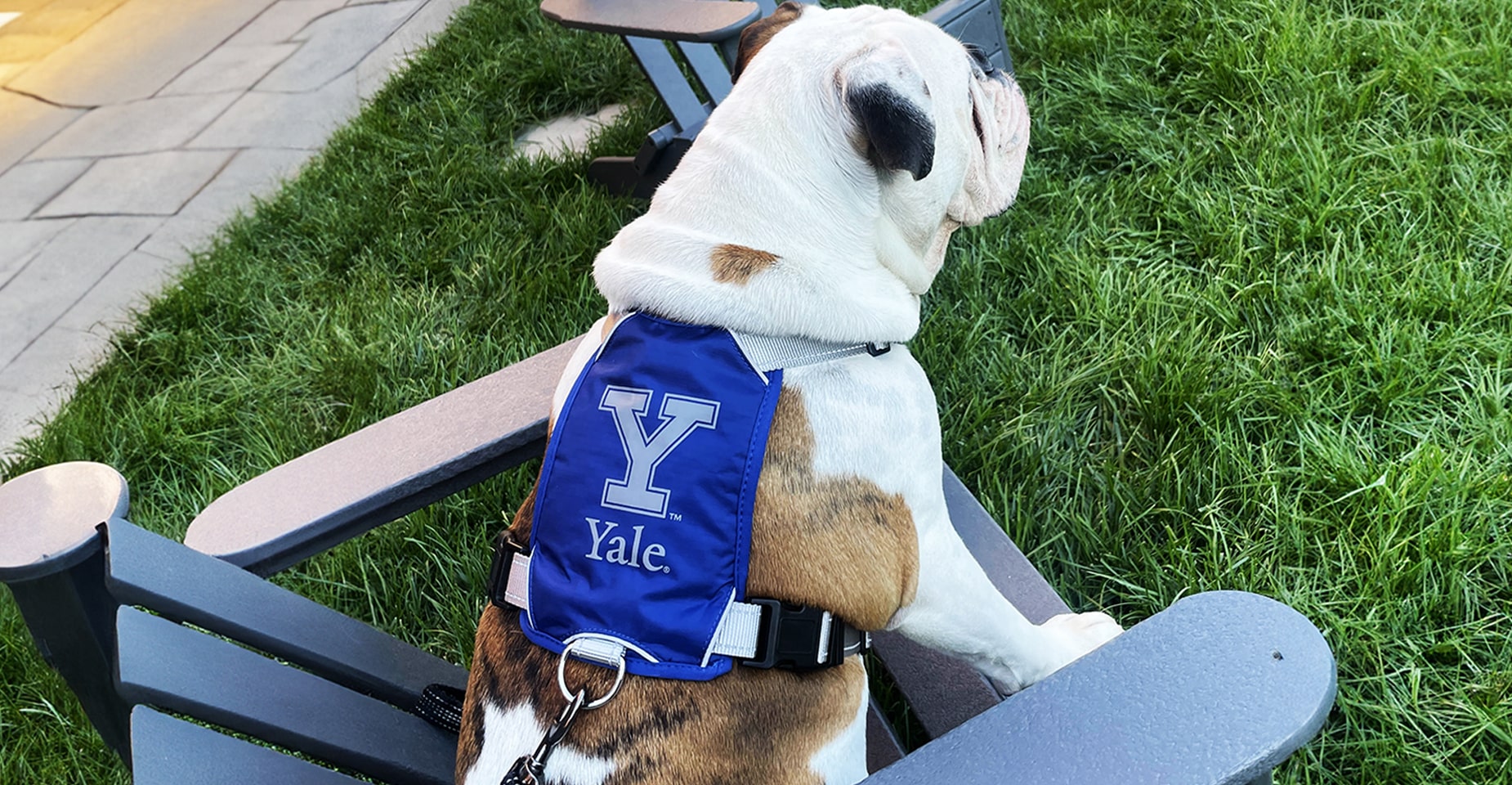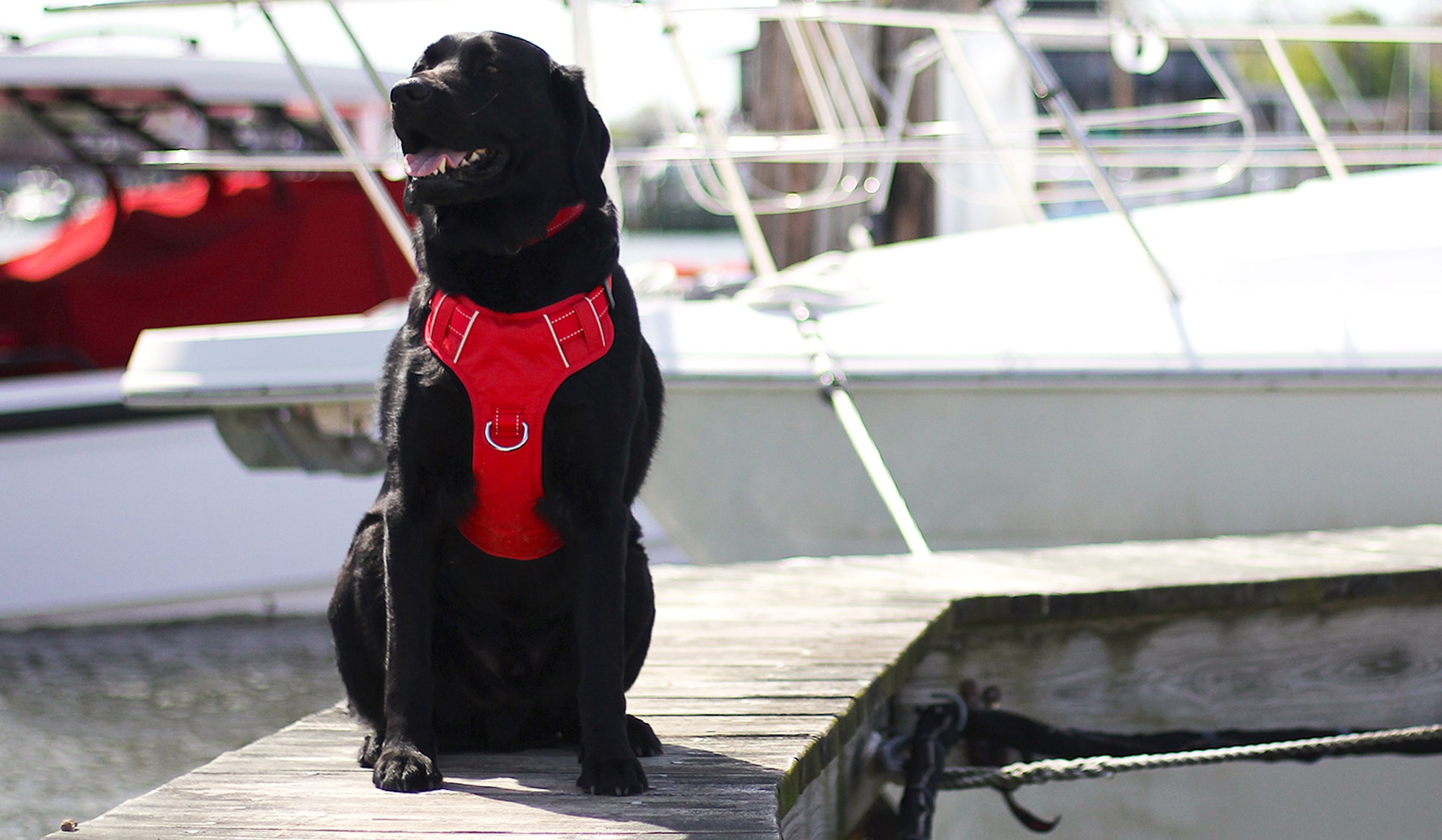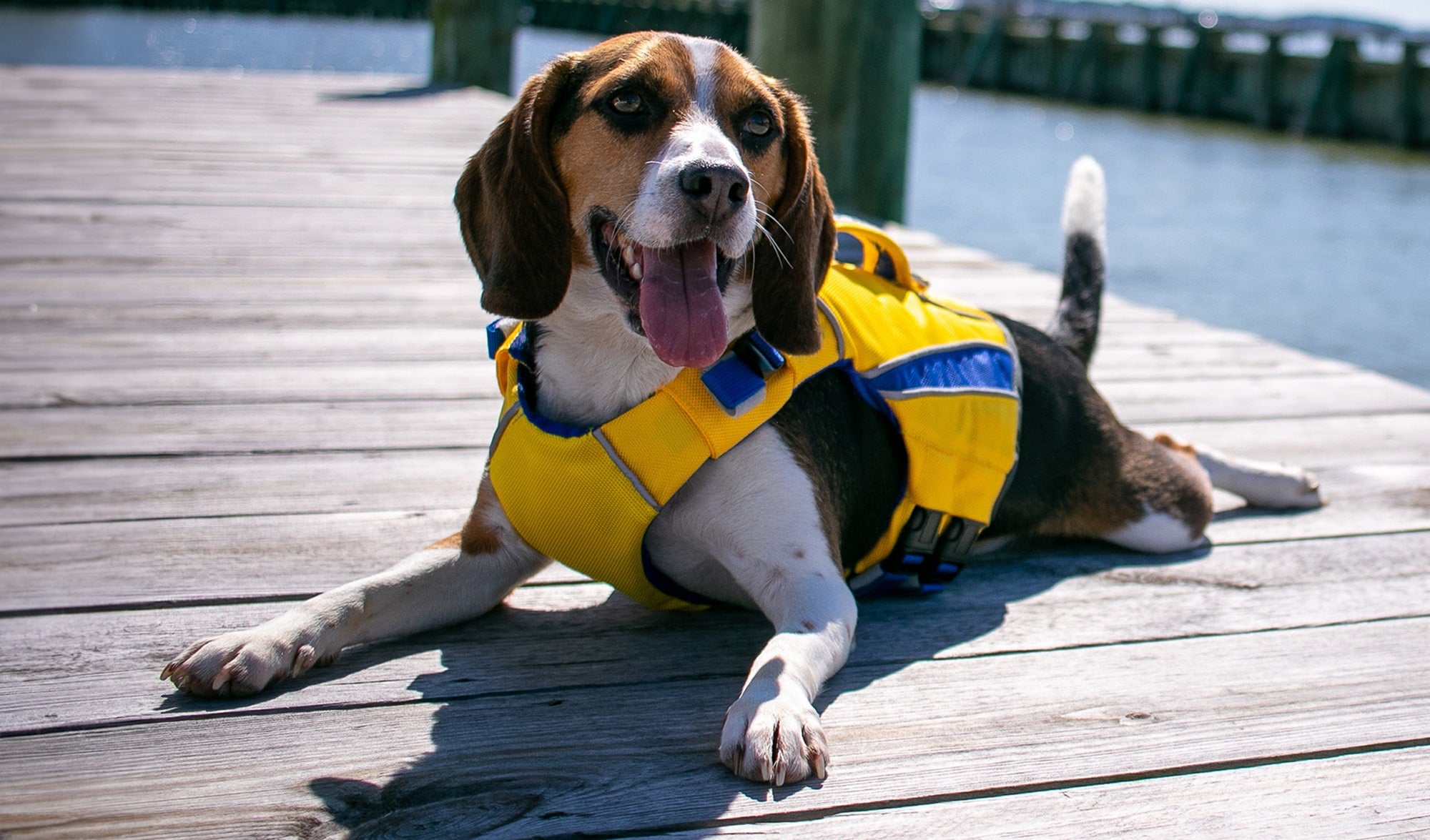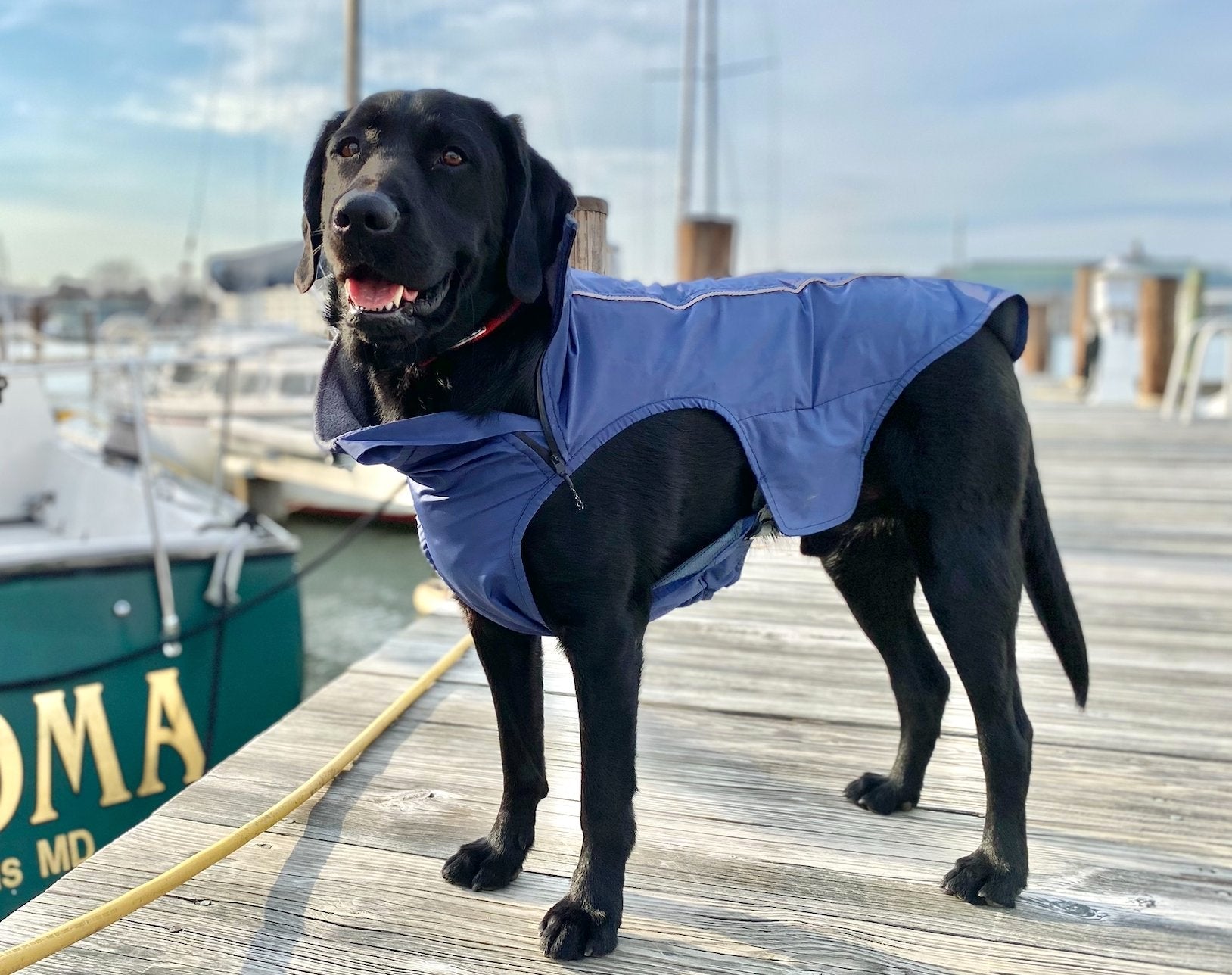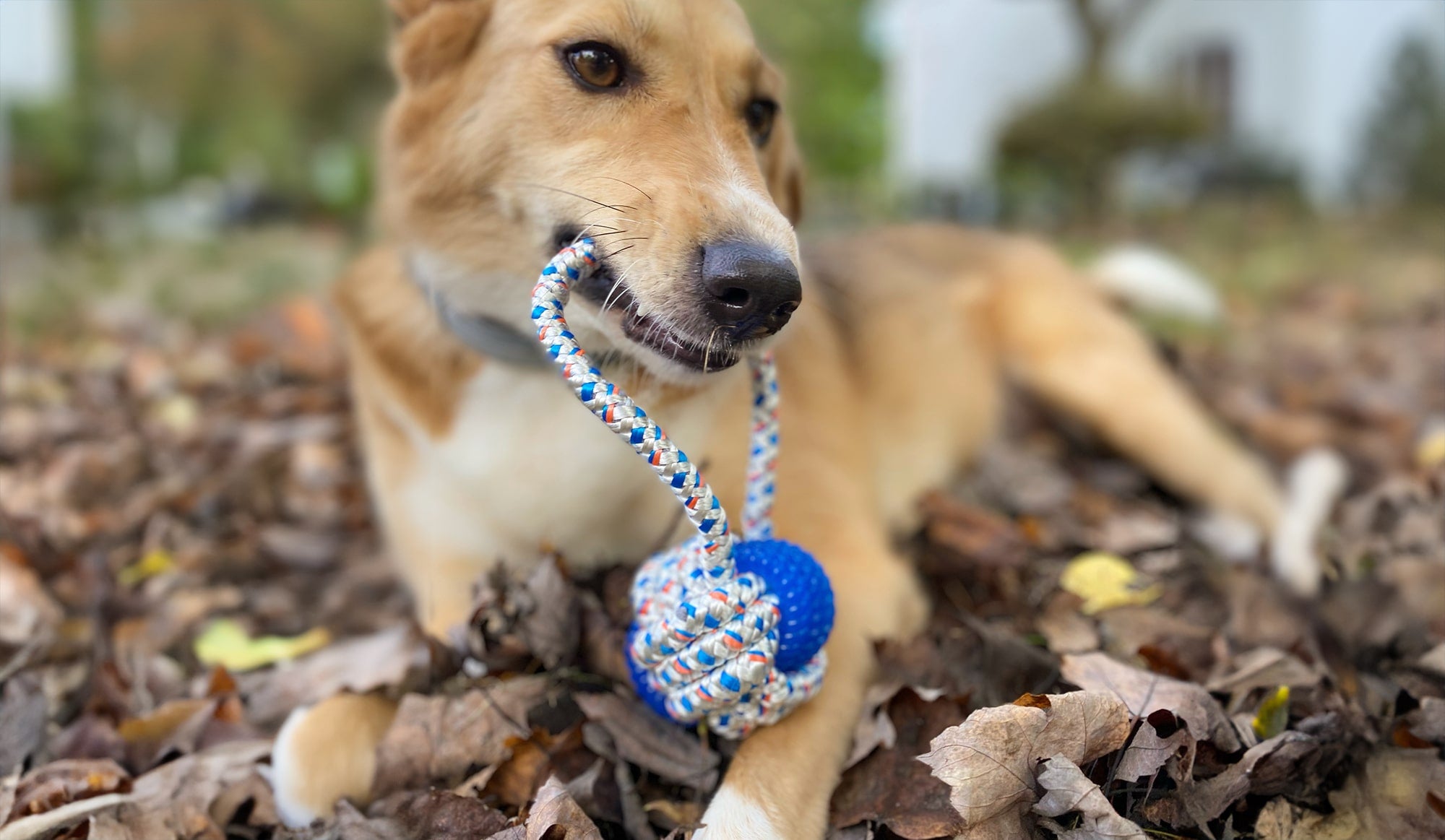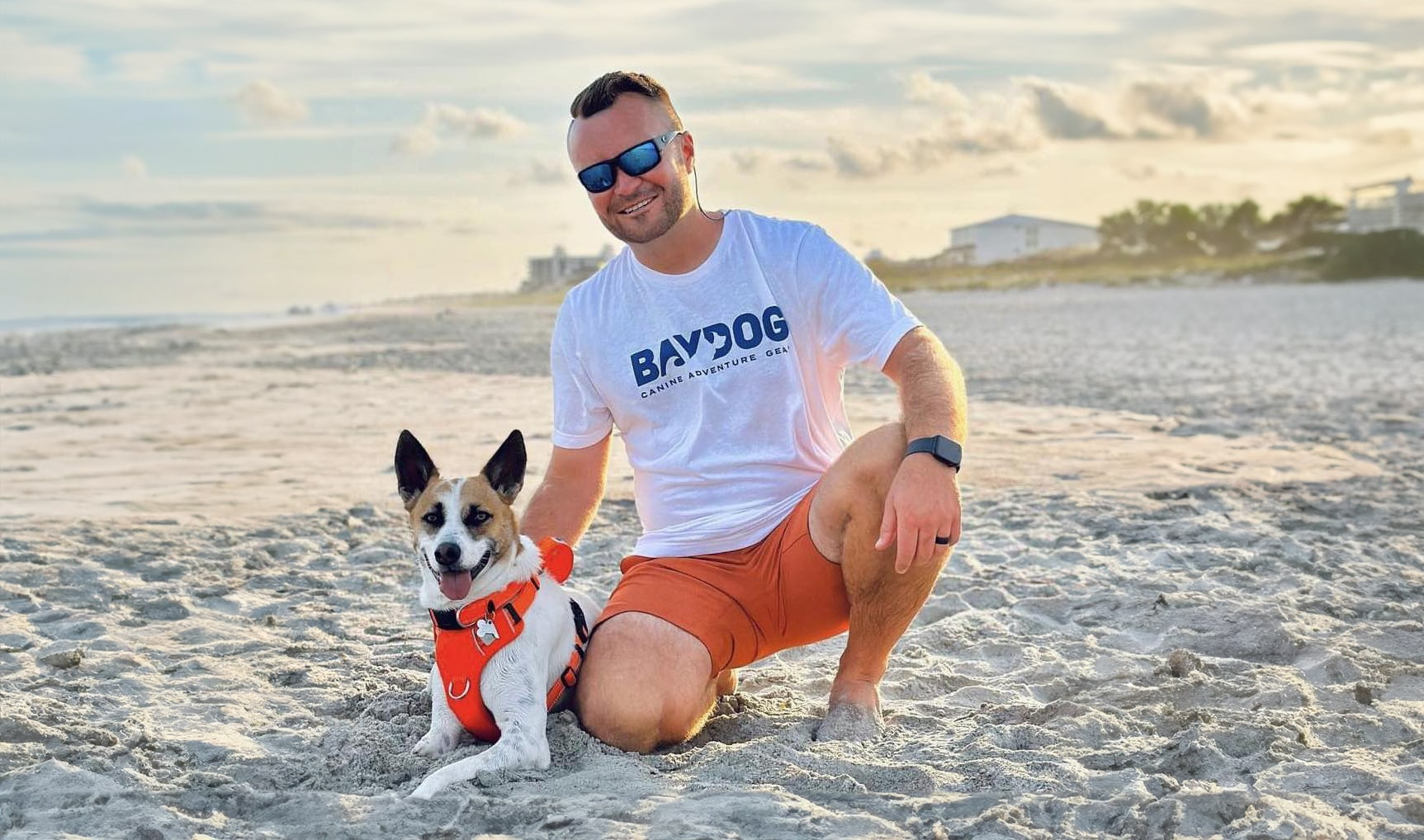At BAYDOG, we care about the safety of your dogs and owners. Many unfortunate natural disasters have happened in the last year from hurricanes, earthquakes, fires, to tornadoes. These events have made us wonder, “How do you prepare and keep yourself and your dog safe?” We’ve created these tips to help you prepare for the next natural disaster that may occur. While we sincerely hope you never have to encounter one, it’s always best to be prepared. We’re thinking of everyone who has been affected.
 1) Make plans for each type of disaster
The first thing we recommend is to have a preparedness plan for every disaster. If it’s a slowly spreading wildfire or oncoming hurricane, you may have time to evacuate. Know the names of some shelters that may allow you to bring pets. Some shelters will allow crated dogs, so it’s helpful to have a crate on hand. If you are not close to pet friendly shelters, write down the information about dog-friendly hotels in a few nearby states so you could evacuate to one. The best way to find dog friendly hotels is through BringFido.com.
If it’s a natural disaster that you cannot plan for, such as a tornado or earthquake, create a safety plan for in or nearby your house. Know which rooms are the safest and keep some extra supplies in those rooms. Have your dog practice laying down in that room with other people in it. This can help them feel more comfortable if an emergency were to happen.
When a natural disaster is hitting, some people struggle to think calmly and clearly. By having a clear step-by-step plan for any emergency, it can help you be prepared if you might need it. The most important thing to do is to stay calm since dogs can pick up on your energy.
While you’re developing your plans, think about what your plan is after an emergency. If you can’t return to your home, know some locations that are safe.
1) Make plans for each type of disaster
The first thing we recommend is to have a preparedness plan for every disaster. If it’s a slowly spreading wildfire or oncoming hurricane, you may have time to evacuate. Know the names of some shelters that may allow you to bring pets. Some shelters will allow crated dogs, so it’s helpful to have a crate on hand. If you are not close to pet friendly shelters, write down the information about dog-friendly hotels in a few nearby states so you could evacuate to one. The best way to find dog friendly hotels is through BringFido.com.
If it’s a natural disaster that you cannot plan for, such as a tornado or earthquake, create a safety plan for in or nearby your house. Know which rooms are the safest and keep some extra supplies in those rooms. Have your dog practice laying down in that room with other people in it. This can help them feel more comfortable if an emergency were to happen.
When a natural disaster is hitting, some people struggle to think calmly and clearly. By having a clear step-by-step plan for any emergency, it can help you be prepared if you might need it. The most important thing to do is to stay calm since dogs can pick up on your energy.
While you’re developing your plans, think about what your plan is after an emergency. If you can’t return to your home, know some locations that are safe.
 2) Create “Go-Bags”: one for yourself and one for your dog.
In case you need to evacuate, go-bags will help you move faster. These are bags that are filled with essentials that you may need if you evacuate. By preparing them ahead of time, you can ensure you have everything you may need. We suggest having a go-bag for every family member and pet. Once you create your bag, it’s best to store it near the door of your house so you can easily grab it if you’re in a hurry.
Here is a checklist from the CDC of some things you may want to have on hand for your dog:
2) Create “Go-Bags”: one for yourself and one for your dog.
In case you need to evacuate, go-bags will help you move faster. These are bags that are filled with essentials that you may need if you evacuate. By preparing them ahead of time, you can ensure you have everything you may need. We suggest having a go-bag for every family member and pet. Once you create your bag, it’s best to store it near the door of your house so you can easily grab it if you’re in a hurry.
Here is a checklist from the CDC of some things you may want to have on hand for your dog:
 3) Have the proper gear for your dog.
Along with a go bag, it’s imperative to have the proper gear ready for any natural disaster. You can keep these in your go bag to make sure your dog is prepared for any weather conditions you may experience. Here are a few products that we recommend:
3) Have the proper gear for your dog.
Along with a go bag, it’s imperative to have the proper gear ready for any natural disaster. You can keep these in your go bag to make sure your dog is prepared for any weather conditions you may experience. Here are a few products that we recommend:

 4) Keep a file with important information about your dog & your family.
In case of emergency, it is a good idea to have all of your dog’s info in one place. You can create a binder with your family’s information, including your dog’s. In this binder, we suggest carrying all of the following for dogs and humans:
4) Keep a file with important information about your dog & your family.
In case of emergency, it is a good idea to have all of your dog’s info in one place. You can create a binder with your family’s information, including your dog’s. In this binder, we suggest carrying all of the following for dogs and humans:
 5) Start collecting extra items.
Along with supplies in your go bag, it’s a smart idea to collect extra supplies in case an emergency would last longer than you have prepared for. We recommend having enough supplies to last you and your dog for 2 weeks. Think of everything you and your dog use over the course of two weeks and start collecting those items. The most important things your dog needs are: food, water, medications (if applicable), poop bags, and portable bowls.
It’s best to double-check the expiration dates on items that you collect so you can be sure everything is still fresh. If it’s expiring soon and you want to get new supplies, consider donating to a local shelter.
If preparing for a disaster seems too overwhelming to do all at once, this is a great way to start collecting supplies slowly. However, we suggest not waiting too long to get ready for an emergency because it is hard to plan for when a disaster will hit.
If you want to learn more about how to prepare for your other pets, head to this article by the ASPCA: https://www.aspca.org/pet-care/general-pet-care/disaster-preparedness
While natural disasters can be scary to think about, it’s always best to be prepared for every circumstance. We encourage you to take the time to be prepared and help others.
5) Start collecting extra items.
Along with supplies in your go bag, it’s a smart idea to collect extra supplies in case an emergency would last longer than you have prepared for. We recommend having enough supplies to last you and your dog for 2 weeks. Think of everything you and your dog use over the course of two weeks and start collecting those items. The most important things your dog needs are: food, water, medications (if applicable), poop bags, and portable bowls.
It’s best to double-check the expiration dates on items that you collect so you can be sure everything is still fresh. If it’s expiring soon and you want to get new supplies, consider donating to a local shelter.
If preparing for a disaster seems too overwhelming to do all at once, this is a great way to start collecting supplies slowly. However, we suggest not waiting too long to get ready for an emergency because it is hard to plan for when a disaster will hit.
If you want to learn more about how to prepare for your other pets, head to this article by the ASPCA: https://www.aspca.org/pet-care/general-pet-care/disaster-preparedness
While natural disasters can be scary to think about, it’s always best to be prepared for every circumstance. We encourage you to take the time to be prepared and help others.
 1) Make plans for each type of disaster
The first thing we recommend is to have a preparedness plan for every disaster. If it’s a slowly spreading wildfire or oncoming hurricane, you may have time to evacuate. Know the names of some shelters that may allow you to bring pets. Some shelters will allow crated dogs, so it’s helpful to have a crate on hand. If you are not close to pet friendly shelters, write down the information about dog-friendly hotels in a few nearby states so you could evacuate to one. The best way to find dog friendly hotels is through BringFido.com.
If it’s a natural disaster that you cannot plan for, such as a tornado or earthquake, create a safety plan for in or nearby your house. Know which rooms are the safest and keep some extra supplies in those rooms. Have your dog practice laying down in that room with other people in it. This can help them feel more comfortable if an emergency were to happen.
When a natural disaster is hitting, some people struggle to think calmly and clearly. By having a clear step-by-step plan for any emergency, it can help you be prepared if you might need it. The most important thing to do is to stay calm since dogs can pick up on your energy.
While you’re developing your plans, think about what your plan is after an emergency. If you can’t return to your home, know some locations that are safe.
1) Make plans for each type of disaster
The first thing we recommend is to have a preparedness plan for every disaster. If it’s a slowly spreading wildfire or oncoming hurricane, you may have time to evacuate. Know the names of some shelters that may allow you to bring pets. Some shelters will allow crated dogs, so it’s helpful to have a crate on hand. If you are not close to pet friendly shelters, write down the information about dog-friendly hotels in a few nearby states so you could evacuate to one. The best way to find dog friendly hotels is through BringFido.com.
If it’s a natural disaster that you cannot plan for, such as a tornado or earthquake, create a safety plan for in or nearby your house. Know which rooms are the safest and keep some extra supplies in those rooms. Have your dog practice laying down in that room with other people in it. This can help them feel more comfortable if an emergency were to happen.
When a natural disaster is hitting, some people struggle to think calmly and clearly. By having a clear step-by-step plan for any emergency, it can help you be prepared if you might need it. The most important thing to do is to stay calm since dogs can pick up on your energy.
While you’re developing your plans, think about what your plan is after an emergency. If you can’t return to your home, know some locations that are safe.
 2) Create “Go-Bags”: one for yourself and one for your dog.
In case you need to evacuate, go-bags will help you move faster. These are bags that are filled with essentials that you may need if you evacuate. By preparing them ahead of time, you can ensure you have everything you may need. We suggest having a go-bag for every family member and pet. Once you create your bag, it’s best to store it near the door of your house so you can easily grab it if you’re in a hurry.
Here is a checklist from the CDC of some things you may want to have on hand for your dog:
2) Create “Go-Bags”: one for yourself and one for your dog.
In case you need to evacuate, go-bags will help you move faster. These are bags that are filled with essentials that you may need if you evacuate. By preparing them ahead of time, you can ensure you have everything you may need. We suggest having a go-bag for every family member and pet. Once you create your bag, it’s best to store it near the door of your house so you can easily grab it if you’re in a hurry.
Here is a checklist from the CDC of some things you may want to have on hand for your dog:
 3) Have the proper gear for your dog.
Along with a go bag, it’s imperative to have the proper gear ready for any natural disaster. You can keep these in your go bag to make sure your dog is prepared for any weather conditions you may experience. Here are a few products that we recommend:
3) Have the proper gear for your dog.
Along with a go bag, it’s imperative to have the proper gear ready for any natural disaster. You can keep these in your go bag to make sure your dog is prepared for any weather conditions you may experience. Here are a few products that we recommend:
- Always have identification on your dog. We love the BAYDOG Tampa Embroidered Collar because all of the important information is sewn on and the stitching is reflective.
- Keep a leash and/or a harness by the door. While most pet parents do this regardless, it’s great to have a strong, reflective leash and harness so your dog can be visible in dark conditions. We advise having the Hudson Bay Leash and the Galveston Harness. If you want more safety protection, we recommend the blaze orange color.

- Have gear for cold weather. Even if you don’t live in a place with cold temperatures, heavy rain or strong wind can make you or your dog cold. We like to keep the Glacier Bay Coat with us at all times because it is lightweight, warm, and easily visible.
- Consider packing a dog backpack. If you need more space and easy access to items for your dog, such as medication, food, water, etc., consider buying a dog backpack. We recommend the Saranac Pack because it has two side bags with plenty of storage. You can also remove the bags and use the base as a harness.
 4) Keep a file with important information about your dog & your family.
In case of emergency, it is a good idea to have all of your dog’s info in one place. You can create a binder with your family’s information, including your dog’s. In this binder, we suggest carrying all of the following for dogs and humans:
4) Keep a file with important information about your dog & your family.
In case of emergency, it is a good idea to have all of your dog’s info in one place. You can create a binder with your family’s information, including your dog’s. In this binder, we suggest carrying all of the following for dogs and humans:
- Current photos of all family members
- Vet & Medical Records, including shot records
- Name and Location of several different vets & doctors, including emergency vets and hospitals
- Up to date Microchip Information
- Any specific care or notes regarding each family member
- Anything else that is important to you
 5) Start collecting extra items.
Along with supplies in your go bag, it’s a smart idea to collect extra supplies in case an emergency would last longer than you have prepared for. We recommend having enough supplies to last you and your dog for 2 weeks. Think of everything you and your dog use over the course of two weeks and start collecting those items. The most important things your dog needs are: food, water, medications (if applicable), poop bags, and portable bowls.
It’s best to double-check the expiration dates on items that you collect so you can be sure everything is still fresh. If it’s expiring soon and you want to get new supplies, consider donating to a local shelter.
If preparing for a disaster seems too overwhelming to do all at once, this is a great way to start collecting supplies slowly. However, we suggest not waiting too long to get ready for an emergency because it is hard to plan for when a disaster will hit.
If you want to learn more about how to prepare for your other pets, head to this article by the ASPCA: https://www.aspca.org/pet-care/general-pet-care/disaster-preparedness
While natural disasters can be scary to think about, it’s always best to be prepared for every circumstance. We encourage you to take the time to be prepared and help others.
5) Start collecting extra items.
Along with supplies in your go bag, it’s a smart idea to collect extra supplies in case an emergency would last longer than you have prepared for. We recommend having enough supplies to last you and your dog for 2 weeks. Think of everything you and your dog use over the course of two weeks and start collecting those items. The most important things your dog needs are: food, water, medications (if applicable), poop bags, and portable bowls.
It’s best to double-check the expiration dates on items that you collect so you can be sure everything is still fresh. If it’s expiring soon and you want to get new supplies, consider donating to a local shelter.
If preparing for a disaster seems too overwhelming to do all at once, this is a great way to start collecting supplies slowly. However, we suggest not waiting too long to get ready for an emergency because it is hard to plan for when a disaster will hit.
If you want to learn more about how to prepare for your other pets, head to this article by the ASPCA: https://www.aspca.org/pet-care/general-pet-care/disaster-preparedness
While natural disasters can be scary to think about, it’s always best to be prepared for every circumstance. We encourage you to take the time to be prepared and help others.





